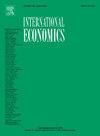Monetary policy effects on freight rates of dry bulk vessels
引用次数: 0
Abstract
This paper examines how monetary policy shocks affect freight rates by applying a VAR model using data for the period 2003–2022. The empirical analysis reveals a significant impact of monetary policy on freight rates of dry bulk vessels. After a contractionary monetary policy shock, freight rates as measured by the Baltic Dry Index (BDI) display a sharp decrease and subsequently start to increase until they reach a peak after almost two and a half years. Concerning individual cargo types, we show that vessels of largest capacity suffer a sharper decrease than the other vessel types in the short run, whereas the persistency of the increase towards the peak point is consistent across all cargo types.
货币政策对干散货船运价的影响
本文使用2003-2022年期间的数据,通过应用VAR模型来研究货币政策冲击如何影响运费。实证分析表明,货币政策对干散货船运价有显著影响。在紧缩的货币政策冲击之后,波罗的海干散货运价指数(BDI)显示出急剧下降,随后开始上升,直到近两年半后达到峰值。就个别货物类型而言,我们表明,在短期内,最大运力的船舶比其他类型的船舶遭受更急剧的下降,而所有货物类型的峰值点持续增长是一致的。
本文章由计算机程序翻译,如有差异,请以英文原文为准。
求助全文
约1分钟内获得全文
求助全文
来源期刊

International Economics
Economics, Econometrics and Finance-Economics, Econometrics and Finance (all)
CiteScore
6.30
自引率
0.00%
发文量
74
审稿时长
71 days
 求助内容:
求助内容: 应助结果提醒方式:
应助结果提醒方式:


